There has been a lot of talk here about Panzerholz and vibration absorption. We have even published calibrated studio measurements of the intrinsic vibration absorption of Panzerholz when compared to aluminum of same dimensions.
Yet, perhaps you are still in doubt about what we mean, and how this pertains to audio playback performance.
To drive home the message, to make it absolutely clear what it is we are talking about, we made this little video to bring you closer to the understanding we have arrived at during 10+ years of research in these matters.
There are plenty of little tweaks out there to upgrade the sonic performance of existing audio gear, but none come even close to a thoroughly engineered solution from the ground up, striving for ultimate performance from all angles of consideration. One such angle is the issue of micro-vibration avoidance in the realm of electronics. Without a mature solution in this regard, even the best electronic engineering will result in but mediocre overall performance in an actual critical listening setting. Measured charts and graphs will tell you everything the language of bench measurements can convey, but take a look and listen to this video to get an idea of real-world performance once the lab work has been faithfully exhausted.
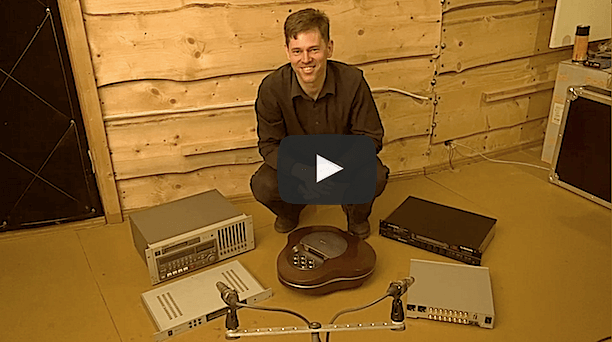
But that's not all. There is more to be told!
The critical viewer will have noticed in the above video that no base reference to the item striking the objects has been made. As such, the video above still does not faithfully convey the level of performance we are dealing with. It only compares the performance of some gear to others.
In order to come closer to a true understanding, we need to mentally subtract the self-resonance of the item striking the objects. For this, we made another short video so you could hear the self-sound of my bones!
When you subtract this self-struck sound from the sound the Laminar Streamer strikes make, you come to a more fundamental realization of the sound coming from the Laminar Streamer, which is not much!
Then, bear in mind that we are on a wooden floor, something which we forgot to protocol separately as well. The lower frequencies you hear are from the floor, and the higher sounds come from my bones, as you can tell. Subtract the two and you have the sound of the Laminar Streamer's case.
(You will notice that for this second video the sound is turned up 12 dB higher than for the first. This was done in an interest to keep me from breaking my bones!)
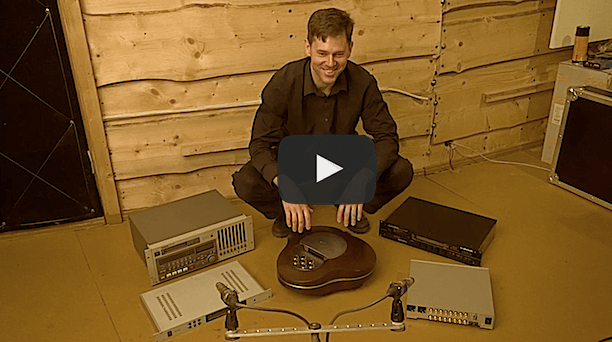
YouTube only gives you an idea. Take the real recorded files for real reference!
Whenever you upload anything to YouTube, YouTube's servers apply their own compression and conversion algorithms to suit their streaming needs. They do change the audio quite dramatically, even if you listen to the 1080p version, which is still converted and manipulated with.
So, please feel free to download the original audio of the two demos above. Note that on these, no dynamic compensation was done. You can play these back on the most pure playback system you have, and you will hear an even greater contrast to the compressed sound tracks from the YouTube videos.
Here they are. Enjoy!
Original sound first video (high end audio gear vs. Laminar Streamer) [15 MB]
Original sound second video (bones vs. Laminar Streamer) [7 MB]
Calibrated Comparison of Laminar Streamer's Vibration Absorption Capacity
In our earlier videos, some question may have remained unanswered as to how exactly the vibration absorption capability of a piece of audio equipment can have to do with its resulting output quality.
We decided to show this to you using calibrated measurements. We want to show you how an equipment born vibration can enter the actual output signal cable of a connected interconnect cable. To do this, we devised a short cable of approximately 40 cm long, attached to which one end is this typical RCA connector:
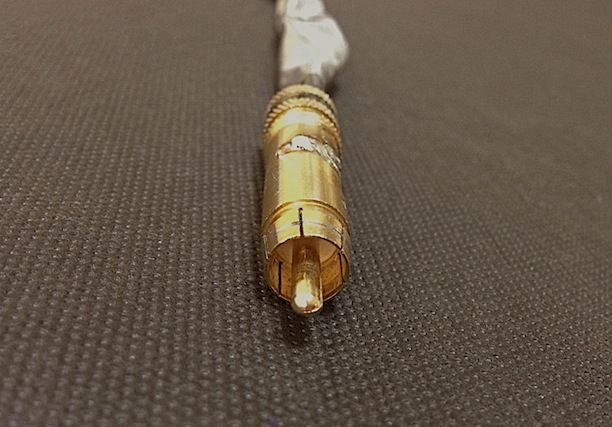
And on the other end is this small metallic flat plate to which we can tape a contact microphone:
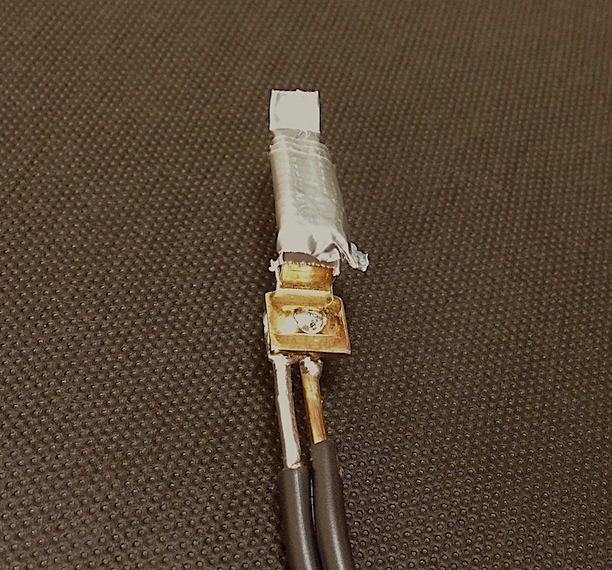
Here is a picture of the entire cable assembly:
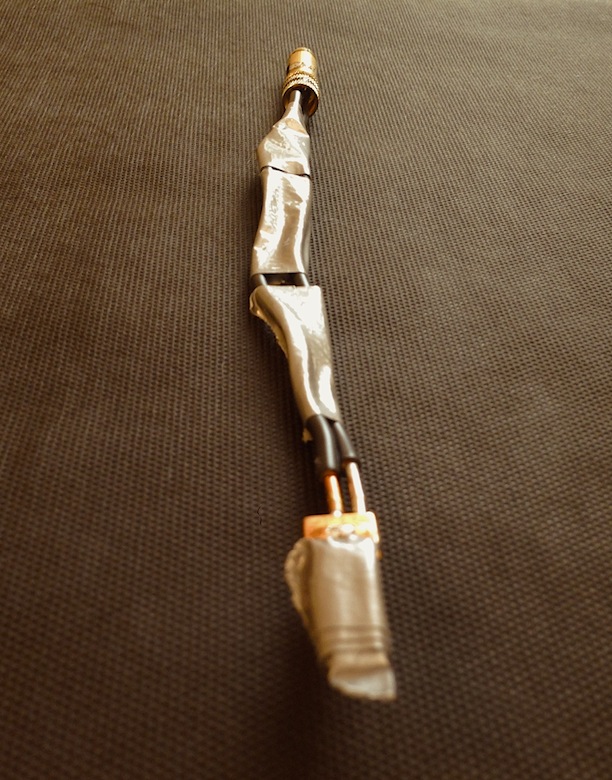
The contact microphone does not capture sounds which do not come off of the surface it is attached to. We used the AKG C 411 condenser contact microphone. It looks like this (the mic itself is the smaller element):
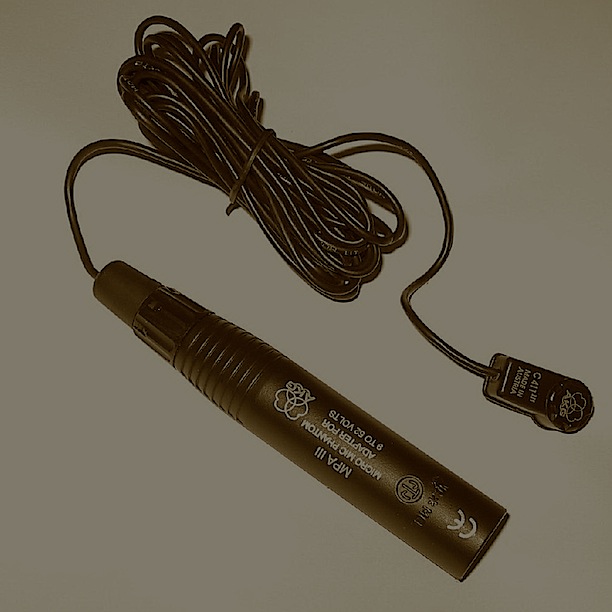
The AKG C 411 frequency response spectrum looks like this:
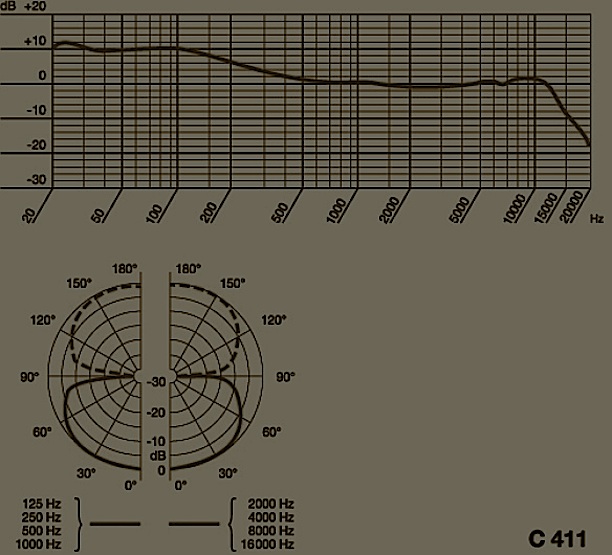
We used the True Systems Precision 8 professional microphone preamp and RME ADI-8 DS A/D converter to capture the data in digital form.
The Laboratory 'Mice'
Playing the role of 'laboratory mice' were three pieces of gear, namely:
A very fine Nikko AM/FM Stereo Radio Receiver:
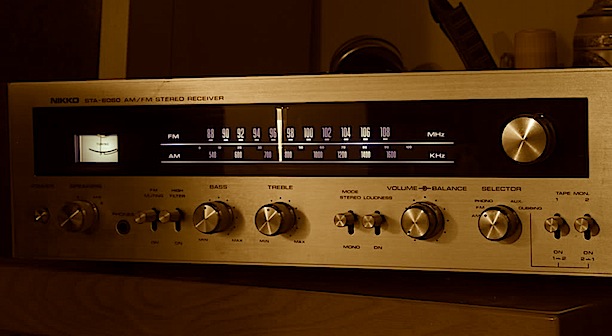
A professional TASCAM DA-88 eight track digital audio recorder:
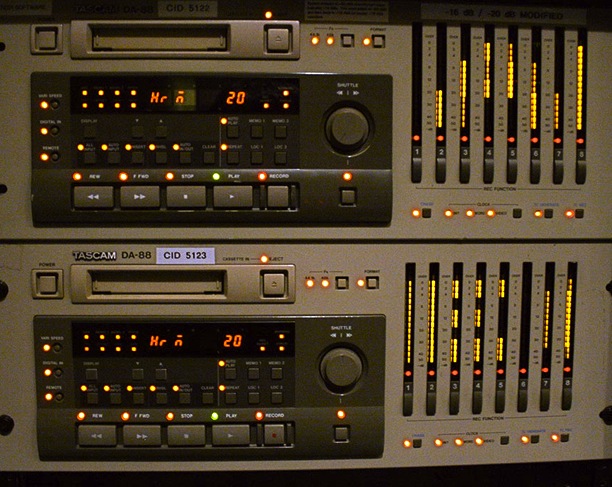
And the Laminar Streamer with an RCA socket installed:
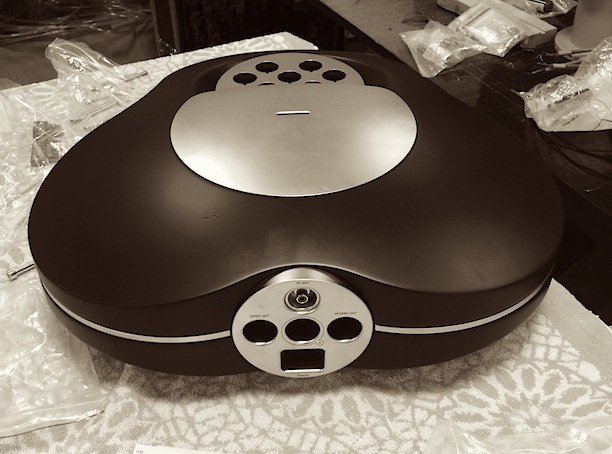
The Bouncing Ball Test
This test consisted of the following rubber ball (pencil shown for size):
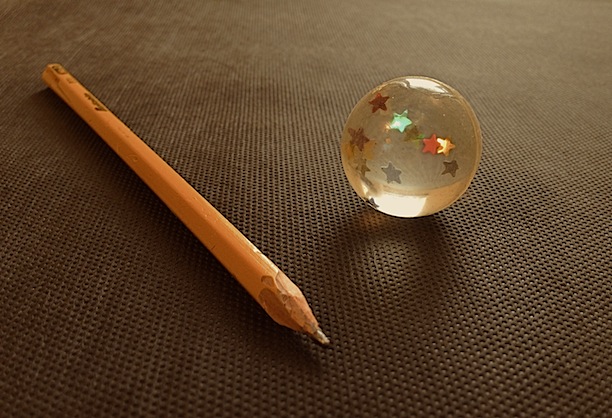
which was made to impact each of the pieces of gear in the following manner (but from 40 cm height each time):
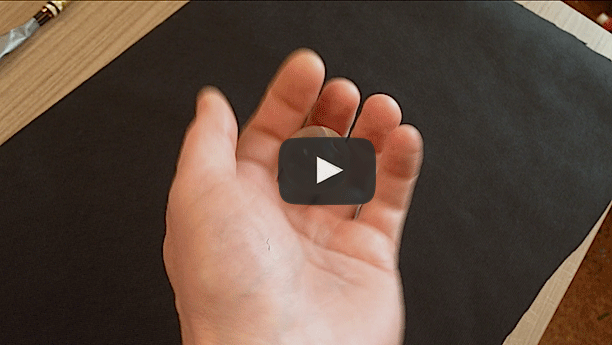
Ball Impact Test: Nikko Tuner
First, we connect the RCA cable assembly into the output of the Nikko Tuner and we drop the ball from 40 cm onto its lid 5 times. Here's a picture of the connection (Nikko is on the left):
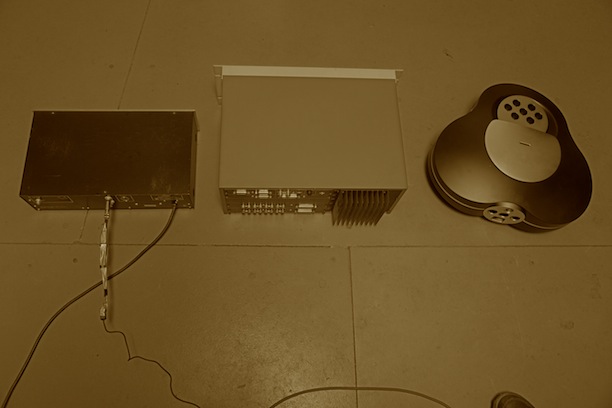
Before you listen to the result, please remember that the contact microphone does NOT pick up sounds from the air directly. It only picks up vibrations which reach the contact plate at the end of our 40 cm cable (which is made out of copper and PVC insulation, and is wrapped in sticky tape to help further dampen any of its own self-vibration).
Listen to the result:
| Nikko AM/FM Tuner: |
|
Ball Impact Test: Tascam DA-88
Now we remove the RCA cable and plug it into the Tascam DA-88:
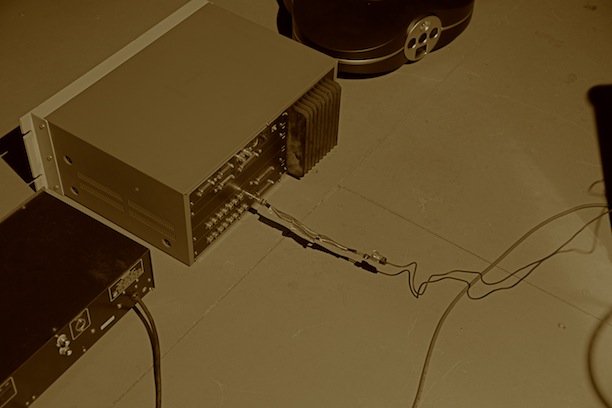
We repeat the exact same procedure with the ball now impacting the top of the Tascam DA-88. Again we do this five times in a row from a height of 40 cm.
Listen to the result:
| Tascam DA-88: |
|
Ball Impact Test: Laminar Streamer
Now we remove the RCA cable and plug it into the Laminar Streamer:
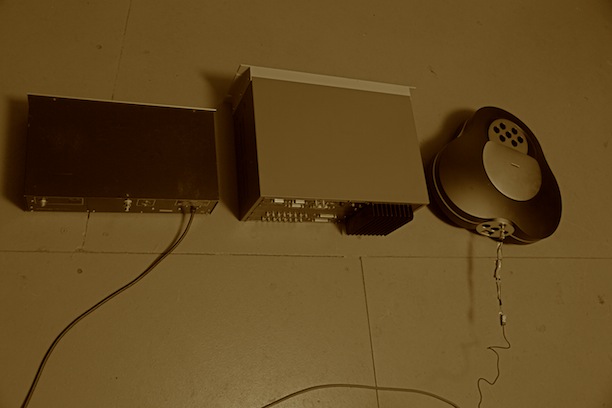
We repeat the exact same procedure with the ball now impacting the top of the Laminar Streamer. Again we do this five times in a row, same height as before.
Listen to the result:
| Laminar Streamer: |
|
The Results
Keep in mind that all of these tests are calibrated. This means that:
(A) The mic was in the same condition for all three tests. The same mic was connected in the exact same way to the exact same plate and cable and RCA connector. We didn't change cables. We used the same cable and kept the mic attached to it.
(B) The preamp's gain was set in the exact same position for all three tests. No changes were made.
(C) No other adjustments were made in the entire studio setup during these three tests. The results are 100% calibrated.
(D) The height of the dropped ball is exactly the same (40 cm) in each of these tests. The weight of the ball is the same (in fact it is the same ball).
(E) This test is 100% repeatable.
(F) The contact microphone only captures surface born sound. It does not capture air born sound (which comes off of the surfaces of the gear itself). We are measuring here only structure born sound which travelled through the RCA outlet of each piece of gear, beginning with exactly the same impulse which came from the ball onto the structure of the equipment case.
Frequency Spectrum Results
Blue trace is Nikko Tuner.
Orange trace is Tascam DA-88.
Green trace is Laminar Streamer.
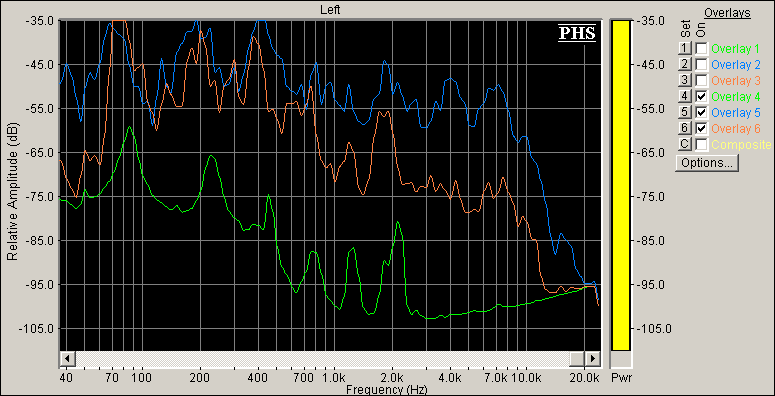
Vibration Over Time Results
Nikko Tuner:
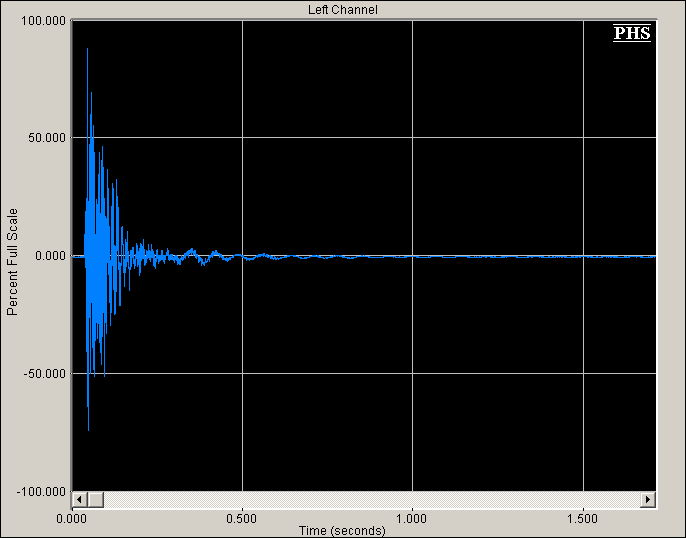
Tascam DA-88:
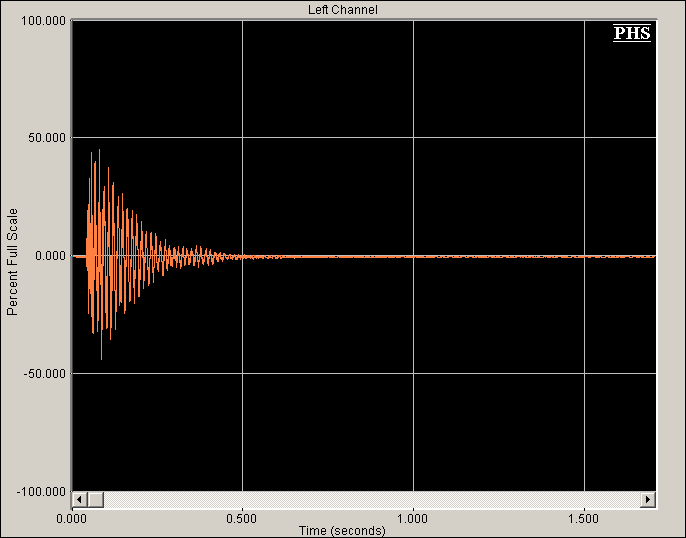
Laminar Streamer:
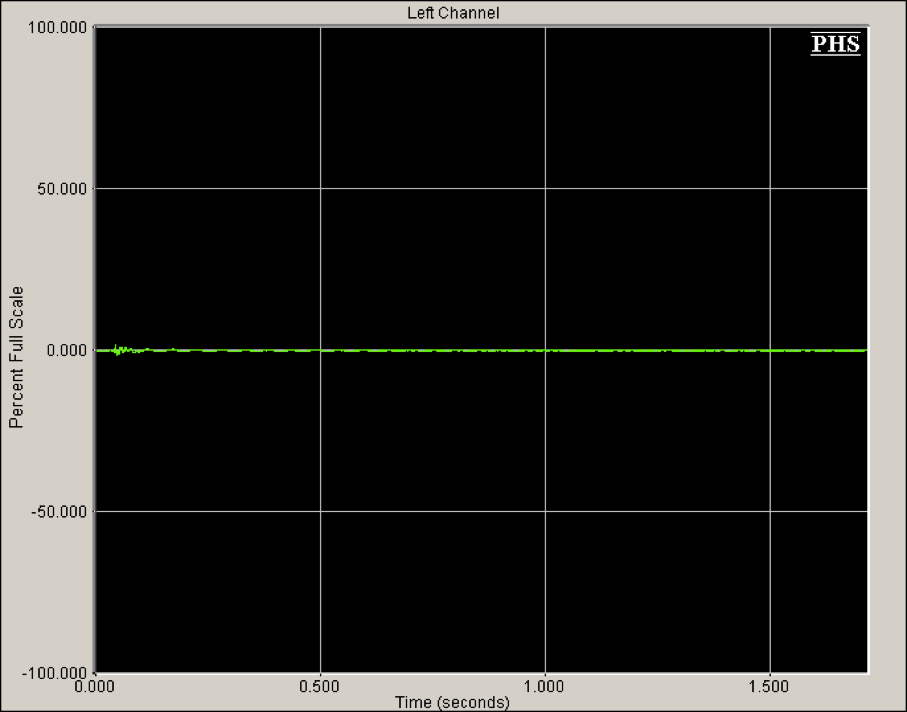
Frequency Over Time Results (low frequencies bottom, high frequencies top)
Nikko Tuner:
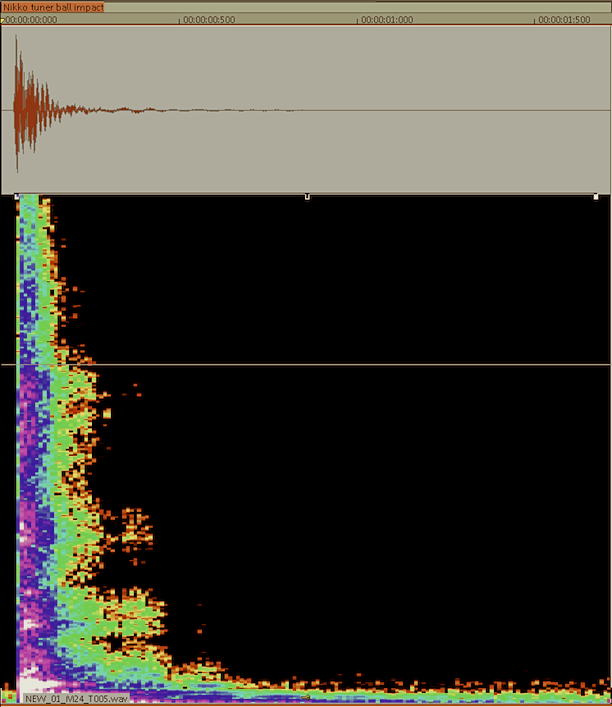
Tascam DA-88:
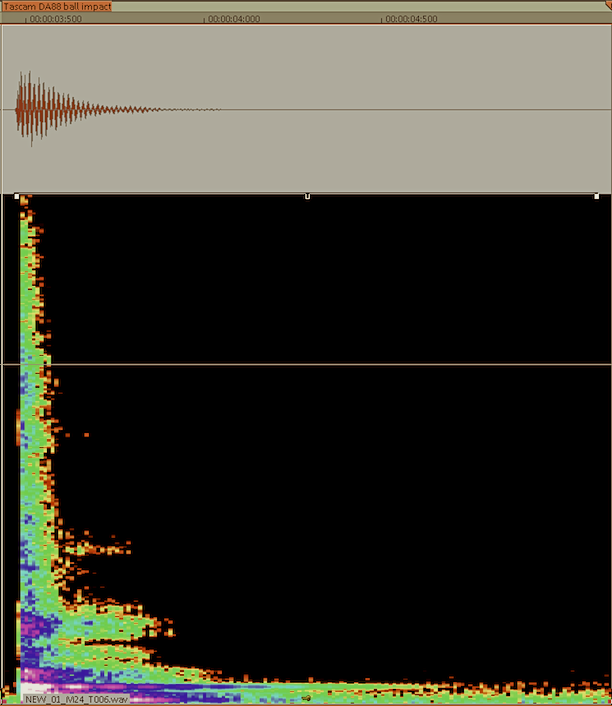
Laminar Streamer:
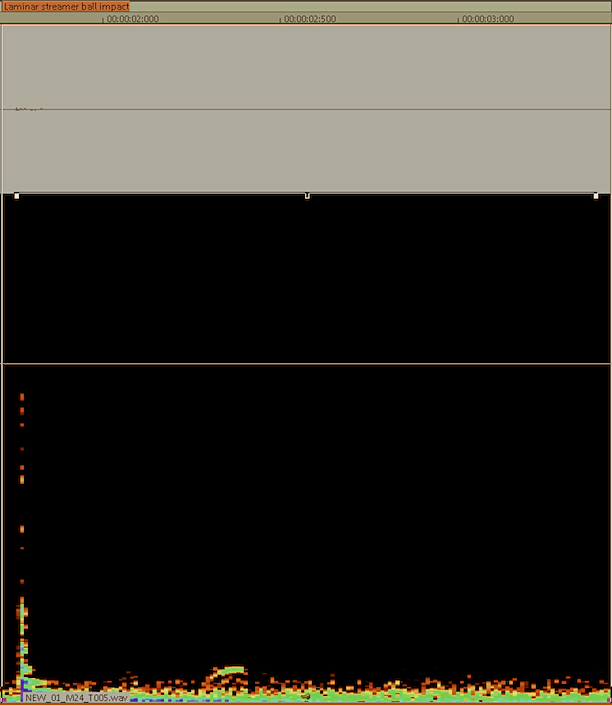
That is correct! Take a look again!
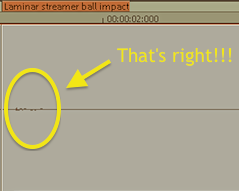
What This All Means
By carrying out this test, we are creating conditions so that we could peer very deeply into micro-vibrational behavior of the structure of the equipment in question. When alternating currents travel along wires or circuit board traces, they create undulating magnetic forces amongst themselves, and these forces result in small vibrations which, through screws and soldering points, are induced into the structure of the equipment.
In this test we have amplified the vibration so that our measuring equipment could give a good signal-to-noise ratio for easy and fool-proof comparison and analysis. In reality, the circuitry in the gear would experience a much smaller amount of vibration from undulating magnetic forces. But in transformers, these can be audible and felt even without any amplification. Taking this aspect of design seriously is just part of what makes the Laminar Streamer so special.
When we measure the vibration at the end of the copper cable, we are in fact measuring the way in which the equipment deals with any structure born vibration. As can be seen, this vibration goes through the RCA output and down the copper wire, where our output signal resides. This means that the vibration will also infest the next piece of equipment which is connected via the cable.
We hope that you can now better appreciate how vibration absorption and signal integrity go hand in hand. In fact, because the Laminar Streamer deals with vibration in such an excellent way, not only does it function itself very well, but also does not infest the next piece of equipment (a DAC) with unwanted vibration originating from itself. And, as an added benefit, any micro-vibration originating from a connected DAC, and entering the Laminar Streamer through cable connections, is likewise diminished through these same effective vibration absorption characteristics.
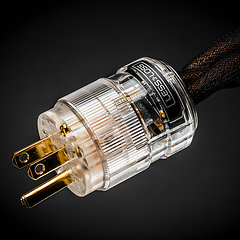
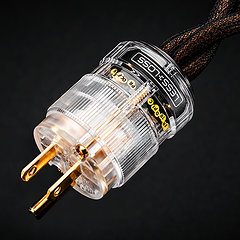
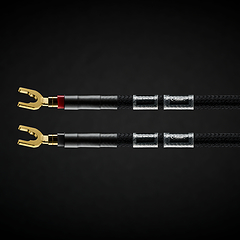
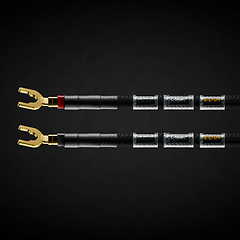
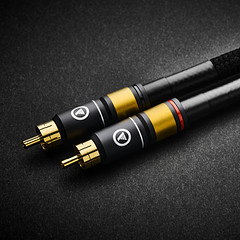
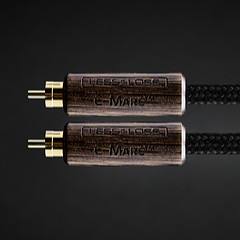
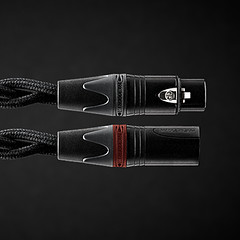
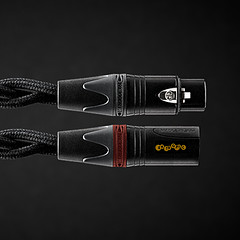
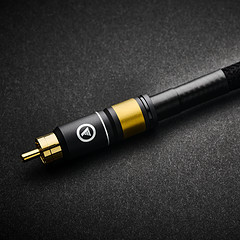
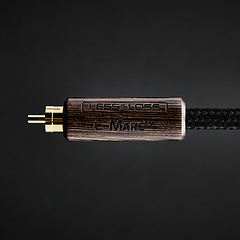
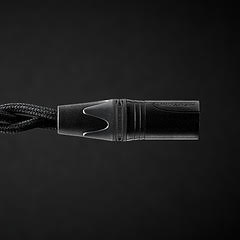
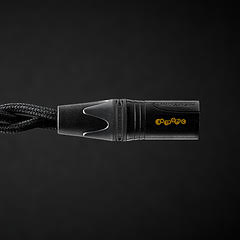
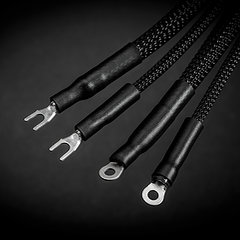
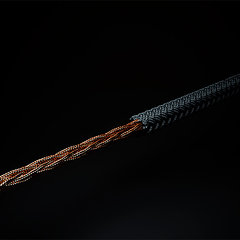
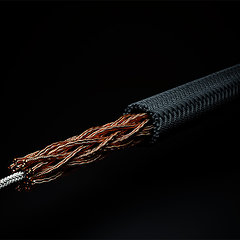
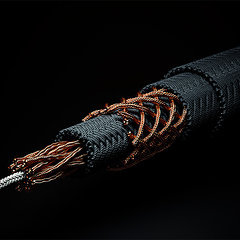
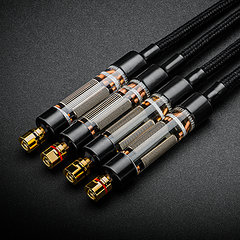
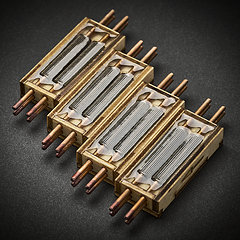
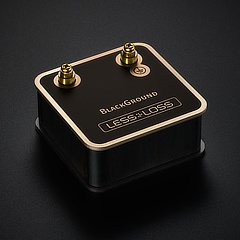
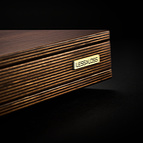
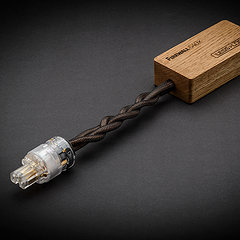
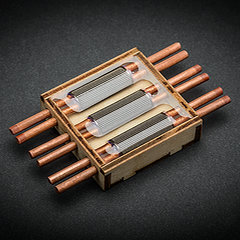
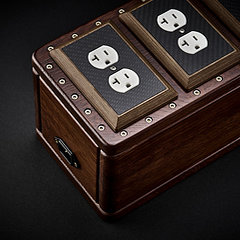
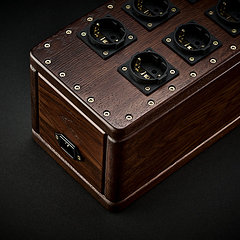

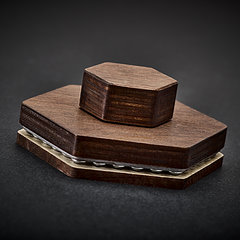
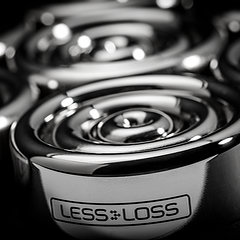
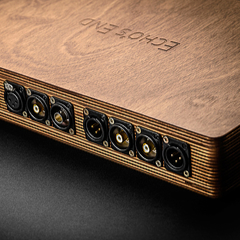
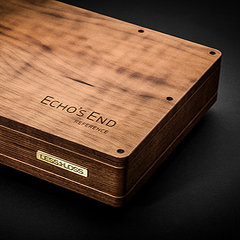
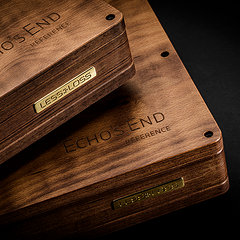
 Beware of Fakes
Beware of Fakes
